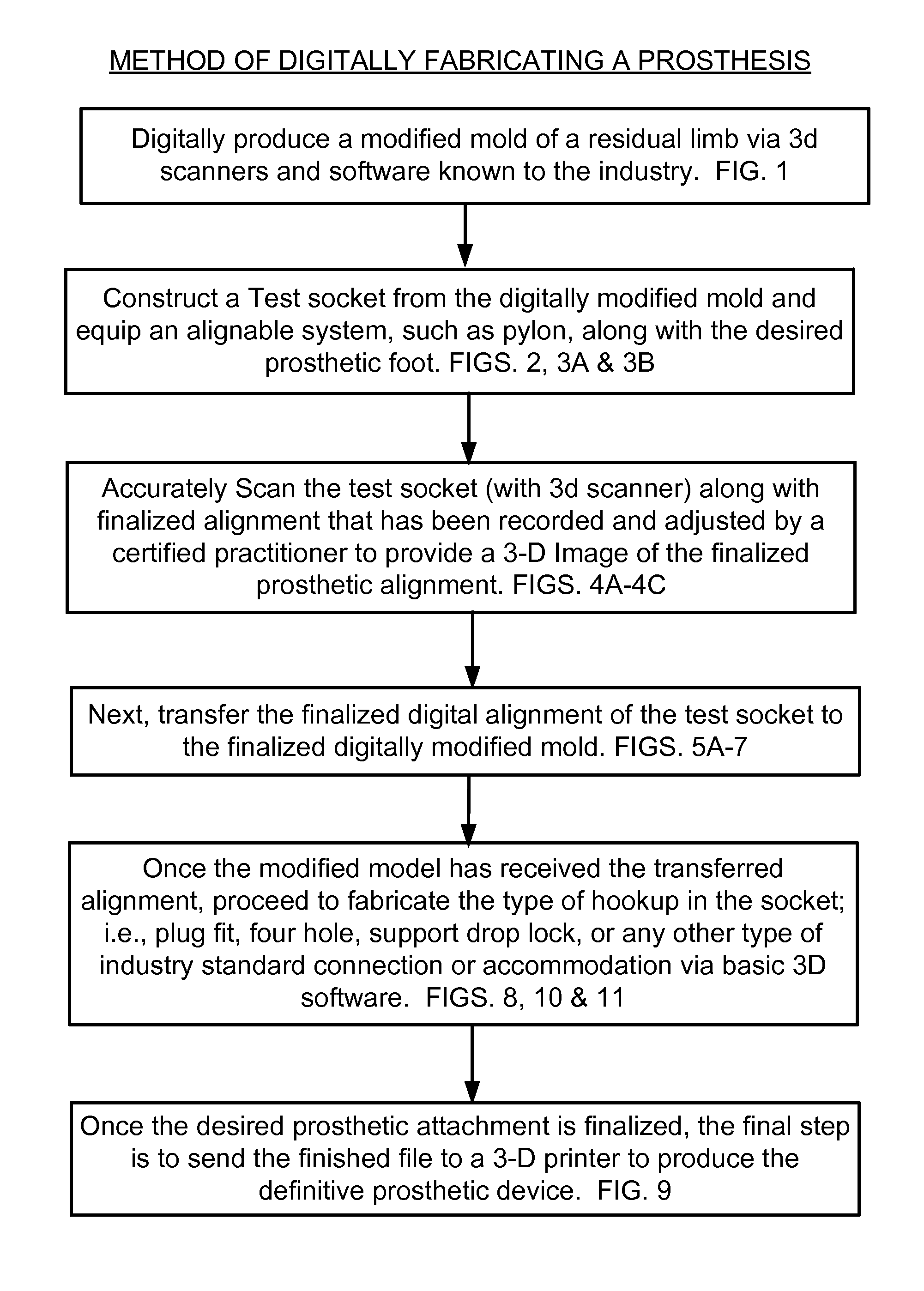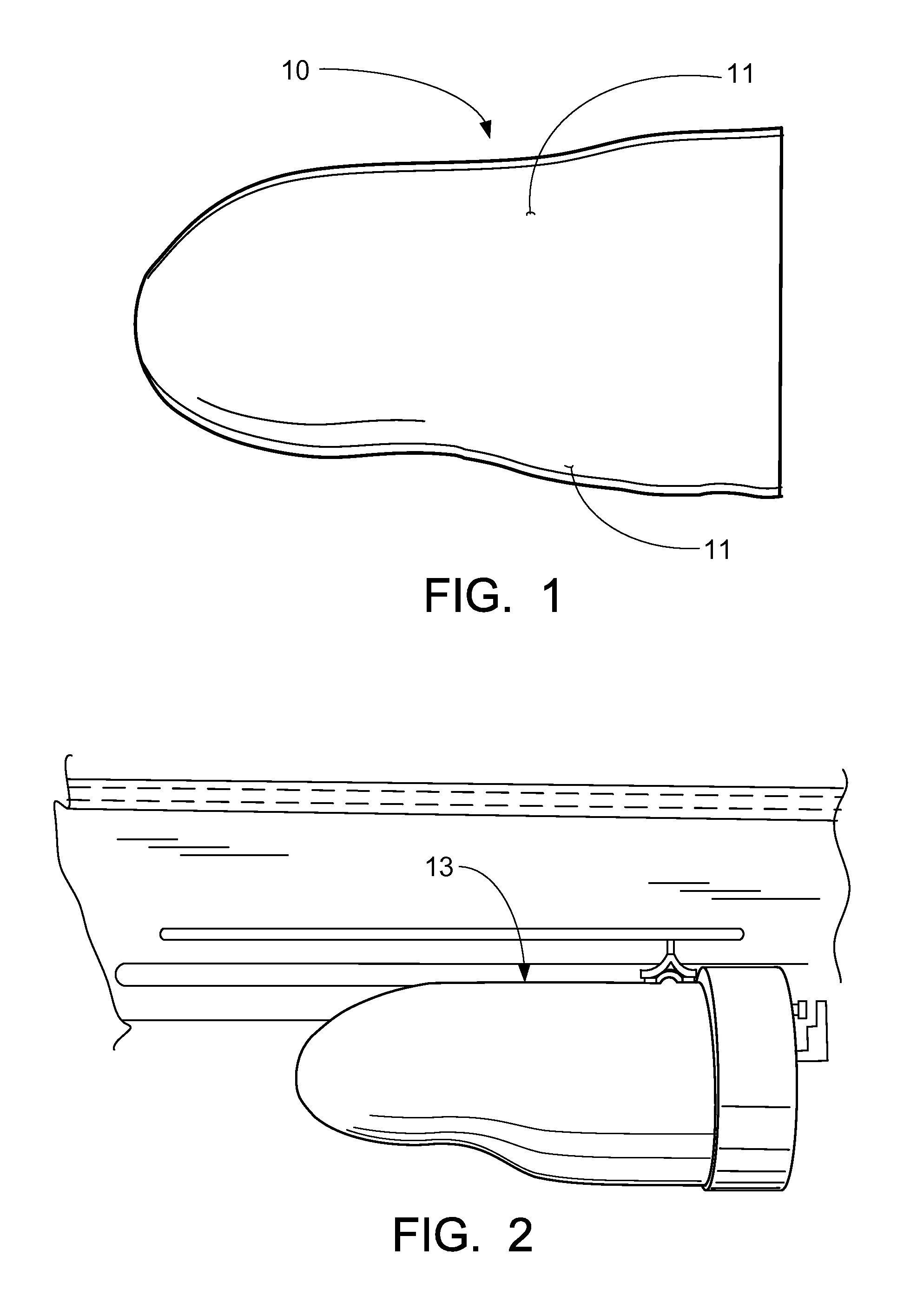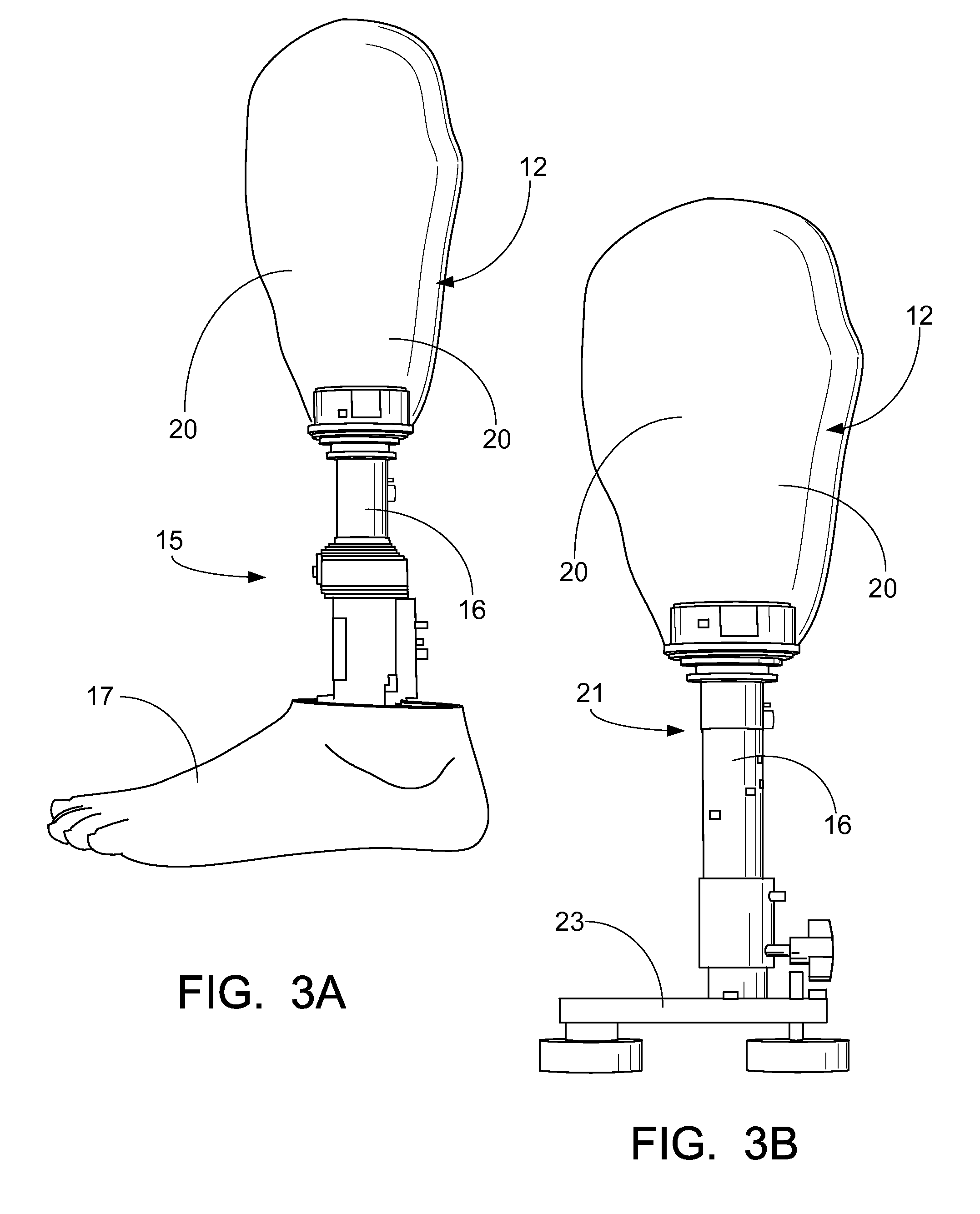Method of digitally constructing a prosthesis
a digital construction and prosthetic technology, applied in the field of prosthetics, can solve the problems of soft tissue breakdown of the residual limb, further disability, and inability to fit the prosthetic socket properly,
- Summary
- Abstract
- Description
- Claims
- Application Information
AI Technical Summary
Benefits of technology
Problems solved by technology
Method used
Image
Examples
Embodiment Construction
[0035]FIGS. 1 through 12 illustrate a preferred embodiment of the method or process of constructing a prosthetic limb through a digital format.
[0036]Before reference is made to the Figures, in general, this technique of achieving a positive mold for a test socket in a digital format is by scanning the residual limb. The first step would be to choose the materials and tools needed for measuring a patient. Again, one would need to prepare suspension of the prosthesis (silicone liner, foam or other types of socket designs); a scanner; a laptop; reflective dots; measuring tools such as a length stick M / L gauge tape measure, etc. The method may vary by which Distal Device used.
[0037]After preparing oneself with the items one would need to take a digital image of a residual limb, the individual would use a scanner to capture the digital image of the limb. After the limb is captured, the individual would use a prosthetic software which is already known in the art, to modify the 3-D image o...
PUM
 Login to View More
Login to View More Abstract
Description
Claims
Application Information
 Login to View More
Login to View More - R&D
- Intellectual Property
- Life Sciences
- Materials
- Tech Scout
- Unparalleled Data Quality
- Higher Quality Content
- 60% Fewer Hallucinations
Browse by: Latest US Patents, China's latest patents, Technical Efficacy Thesaurus, Application Domain, Technology Topic, Popular Technical Reports.
© 2025 PatSnap. All rights reserved.Legal|Privacy policy|Modern Slavery Act Transparency Statement|Sitemap|About US| Contact US: help@patsnap.com



